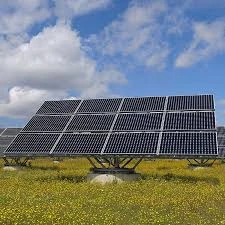Exploring the Impact of Latitude on Solar Panel Efficiency Across Different Regions
Solar Panel Efficiency by Latitude
Solar energy has emerged as a leading solution to address the growing demand for renewable energy sources. One of the key metrics in the performance of solar panels is their efficiency, which can vary significantly based on geographic location, particularly latitude. Understanding how solar panel efficiency correlates with latitude is essential for optimizing solar energy production and deployment strategies.
At a basic level, solar panel efficiency refers to the ability of a solar panel to convert sunlight into usable electricity. This conversion efficiency is influenced by several factors, including the angle of sunlight, atmospheric conditions, temperature, and the inherent characteristics of the solar panels themselves. Latitude plays a crucial role in determining the angle and intensity of sunlight that solar panels receive throughout the year.
Sunlight Intensity and Angle
The Earth is tilted on its axis, which affects the distribution of sunlight across different latitudes. Areas closer to the equator generally receive more direct sunlight year-round, resulting in higher solar insolation— the amount of solar radiation energy received on a given surface area during a given time. As one moves toward the poles, the sunlight hits the Earth at a more oblique angle, diminishing its intensity and leading to more diffused light. Consequently, solar panels installed in equatorial regions often demonstrate higher efficiency due to more consistent and intense solar radiation.
Conversely, locations at higher latitudes experience significant seasonal variations in daylight hours and sun angles. For example, during the winter months, regions at high latitudes have shorter days and an angle of sunlight that is less effective for solar energy generation. This seasonal fluctuation can result in lower overall energy production from solar panels, despite their individual efficiency ratings remaining unchanged.
Temperature Effects
solar panel efficiency by latitude

Another factor influenced by latitude is temperature. Solar panels typically operate best within a moderate temperature range. High temperatures can lead to decreased efficiency, while extremely low temperatures can actually enhance performance. However, regions closer to the equator generally maintain higher average temperatures, which can negatively affect solar panel performance due to thermal losses. On the other hand, temperate regions may experience more balanced conditions for solar efficiency, allowing panels to perform optimally for a larger portion of the year.
Geographic Considerations
When considering solar panel installation, it’s also important to factor in geographic considerations beyond latitude. For instance, urban areas with high levels of pollution may experience reduced sunlight quality, impacting solar panel efficiency. Conversely, locations with clear skies and less atmospheric interference often enjoy enhanced solar performance. Therefore, while latitude does provide a significant overview of potential solar energy output, local climatic conditions must also be evaluated.
Conclusion
The efficiency of solar panels is indeed intricately tied to latitude, affecting factors such as sunlight intensity, angle, and temperature. Regions near the equator typically benefit from higher solar insolation and less variation in seasonal sunlight, leading to greater overall efficiency in solar energy generation. In contrast, areas at higher latitudes confront challenges such as seasonal changes in daylight and varying sunlight angles.
Understanding these dynamics is critical for policymakers, businesses, and individuals investing in solar energy. Tailoring solar strategies to the specific conditions of a given latitude can lead to more effective harnessing of renewable energy, supporting global transitions toward sustainable energy solutions. By comprehensively assessing both latitude and local climatic conditions, stakeholders can maximize the efficiency of solar installations, making the most of this valuable resource.
-
Unlocking Energy Freedom with the Off Grid Solar InverterNewsJun.06,2025
-
Unlock More Solar Power with a High-Efficiency Bifacial Solar PanelNewsJun.06,2025
-
Power Your Future with High-Efficiency Monocrystalline Solar PanelsNewsJun.06,2025
-
Next-Gen Solar Power Starts with Micro Solar InvertersNewsJun.06,2025
-
Harnessing Peak Efficiency with the On Grid Solar InverterNewsJun.06,2025
-
Discover Unmatched Efficiency with the Latest String Solar InverterNewsJun.06,2025







